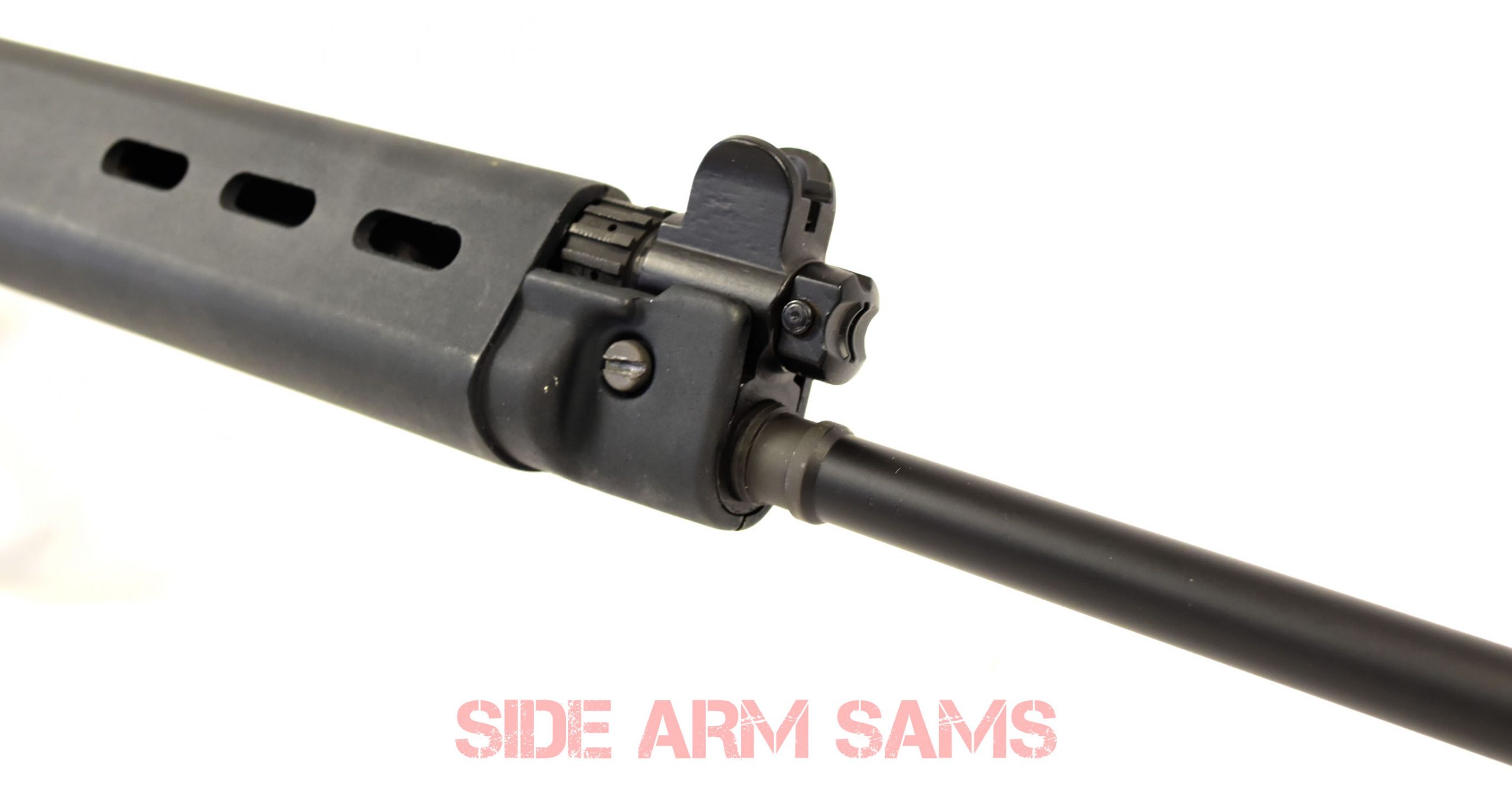

The L1A2 bayonet was produced by Australia and Canada (where it was designated C1).

The L1A1 was used by Britain and has identifying markings on the ricasso and grip. The L1A1 has a square fuller, while the L1A2 can have either a square (pictured above) or rounded fuller (pictured below). The L1A1 and L1A2 bayonets are very similar, both featuring a protruding press stud. Some 1A bayonets also had a longer blade. The Indian bayonet is closely patterned on the British L1A4, but departs from the L1 pattern in having wooden grips. The British, Australian, and Canadian bayonets are very similar, differing in minor respects. The L1 series consists of five variants, three produced in Britain (L1A1, L1A3, & L1A4), one produced in Australia (L1A2) and Canada (C1), and one produced in India (1A). The L1A1 blade was so closely patterned after those used with the No. 5, No. 7, and No. 9 bayonets, that the No. 5 Mk. I scabbard developed during World War II continued in use with the L1 series bayonets until the FAL was phased out of British service in 1987. The rifle was designated the L1A1 Self Loading Rifle (SLR), and the bayonet shared that designation. Still very much in love with the clip-point blade introduced on the No. 5 Mk. I bayonet, Britain proceeded to design a knife bayonet around their beloved blade. Britain adopted their own variant of the FAL in 1954 to replace the venerable Lee-Enfield bolt-action rifle.


 0 kommentar(er)
0 kommentar(er)
